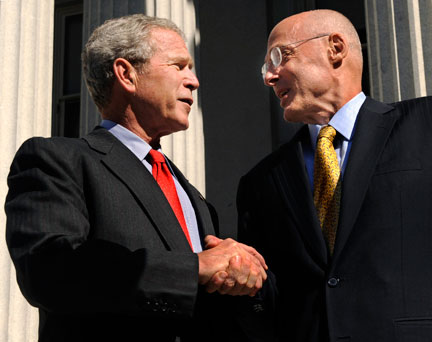What went wrong?
by Salil Sarkar
Article published on the 2008-10-28 Latest update 2008-11-01 15:22 TU
As recently as a year ago, establishment economists took for granted that the western banking system was strong and upright. In the US mortgage defaults were rising, but officials were sure it was only a bump in the road.
In early 2007 German lender IKB began to implode as a result of subprime losses incurred in the US.
On 9 August 2007 the European Central Bank injected 95 billion euros into the money markets to prevent borrowing costs soaring. The US Federal Reserve soon followed suit.
At the time, these moves were dubbed “pre-emptive” and predictions of crisis were generally brushed aside.
A year later the worst financial crisis seen in the west for 70 years is rearing its head.
Last August markets which were crucial for raising funds started to dry up, a network of "financial vehicles", as they are called, slid into crisis.
Prices of many debt securities collapsed starting a chain reaction. Many US and European banks found themselves short on cash, even insolvent.
When subprime losses emerged in late 2006, the US government initially estimated that subprime losses would be between 50 billion dollars and 100 billion dollars – a tiny fraction of the total capital of western banks or assets held by global investment funds.
How then could problems with US subprime mortgages provoke such turmoil?
The answer beginning to take shape is that finance capital, which is now internationally dominant, invented increasingly devious means of multiplying gains, slicing and dicing loans, subprimes included, and baking them into toxic financial products to sell to the world.
These were euphemistically called "innovations". Specialised media reports cite data suggesting that, between 2000 and 2006, nominal global issuance of credit instruments rose twelvefold to 3,000 billion dollars (1,929 billion euros) a year from a meagre 250 billion dollars (200 billion euros).
This appears to have become particularly intense from 2004. A credit bubble was ballooning, leading to artificially low borrowing costs in the US and some other rich countries.
Some argued that modern capital markets had become so much more advanced than their predecessors that banks would always be able to trade debt securities.
Numerous institutions and speculators assumed, wrongly as it turned out, that the credit-rating agencies offered a cheap and easy compass with which to navigate this ever-more-complex world.
Last but not least, it was widely assumed that the process of “slicing and dicing” debt had made the financial system more stable, because the pain of any potential credit defaults would be spread among millions of investors, rather than concentrated in particular banks.
So no attempt was made to force banks to boost their capital reserves to offset exploding debt issuance. Instead, regulatory rules permitted banks to cut their capital levels sharply.
To put it simply, in the early days of capitalism, a bank with one dollar in reserve would lend the dollar out, say, ten times. In our ultramodern globalised system, the bank would loan out the same dollar several hundred times.
A default, even smallish, somewhere along the line would thus amount to the fluttering of the wings of the oft-quoted butterfly at one end of the world which provokes a tidal wave at the other end.






